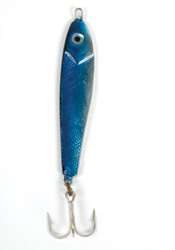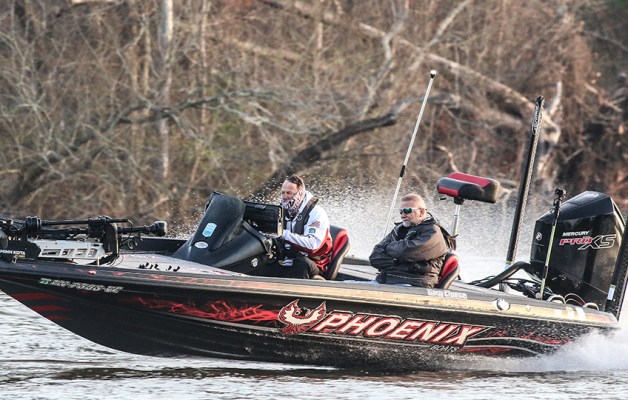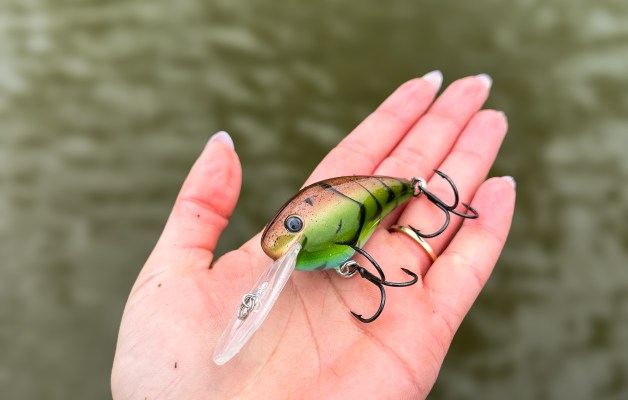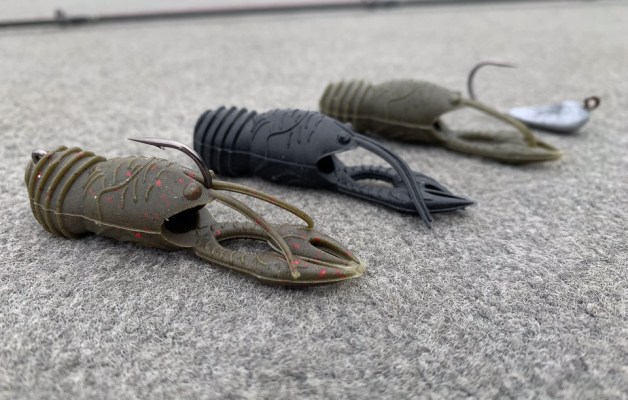
There's not a better way to evaluate the effectiveness of a product than the test of time. And it's tough to find a fishing lure that's been around longer, and fooled a larger variety of fish, than the spoon. They take cod from the Atlantic and Pacific, trout from mountain streams and pike from weedy lakes and reservoirs. Spoons take their share of largemouth, smallmouth and spotted bass, too.
There are lots of anglers, however, who don't take advantage of what spooning has to offer. They are quick to jump to the conclusion that these small hunks of pressed steel take less than average bass, only relying on them during the coldest months when nothing else seems to work.
"Although I use spoons most often during the fall and winter," admits California touring pro Greg Gutierrez, "they're one of those baits that I always keep in the boat and ready to go —I'll catch big bass at any time of the year when conditions are right."
Catching bass with spoons is best once you've located active bass that are feeding on schooled-up baitfish. Find isolated structure, whether a rockpile, a hump or a narrow creek channel at the same general depth as the bait, and you're in business.
"Spooning allows me to follow the bait, quickly get my lure down to the fish and attract the bass that are typically holding just below the school," says San Ramon, Calif., pro Roderick Lee. "Sometimes they're on flats, but I like to look for some type of bottom structure that keeps the bass in an area."
By matching the size and color of your spoon to the baitfish that bass are chasing you'll catch plenty of fish, but if you want to coax the largest of the bunch into eating your offering, you'll have to think big.
"The larger spoons are ideal for keying in on bigger bass," says Gutierrez. "That's what I'm looking for — those huge bass that don't want to waste energy running around after the small baitfish. Not to say that little fish don't eat the larger spoons, because they do."
"Quality bass aren't eating these (big) spoons because they look like shad or smelt," concurs Lee, "they're eating them because they look like the bluegill or the small trout that are chasing the baitfish."
The first step to successful spooning is tracking down the schools of baitfish that bass are following. If you're lucky you'll come across fish busting bait on the surface. More times than not, however, you'll have to rely on quality electronics to locate baitfish in relatively deep water.
When Gutierrez discovers a ball of suspended baitfish, often holding at 30 to 50 feet, he'll position his boat directly over them and fish vertically.
"If I see that the fish are suspended, I'll lower a 2- to 6-ounce spoon all the way through the ball of bait," he explains. "They fall extremely fast, so it doesn't take long. After holding the lure there, in an upright position, I'll yo-yo it up and down with the flex of the rod."
Gutierrez uses a different approach when bass are tight to the bottom.
"Bass don't like moving up the water column during the colder months," says Gutierrez, "so I'll let my spoon go all the way to the bottom on a tight line. By lifting it just 3 or 4 inches, while keeping the hook in contact with the bottom, I'll then flop it from side to side."
It takes a more aggressive approach when targeting bass suspended below baitfish being worked by other predators on the surface. These fish tend to be competitive, and by using erratic, oversized spoons that stand out from the crowd, you can expect bass to attack with reckless abandon.
"I'll pitch a spoon past the activity," says Lee, "letting it flutter down with my rod tip near the water. Then I'll snap my rod back to 12 o'clock, with two pumps in that one motion, before letting it fall again on slack line.
I'm trying to create a lot of commotion. If the fish want it slower, I'll lower the spoon through the bait with some tension on the line."
THE DAWN OF BASS-SPECIFIC MEGA-SPOONS
Vertically jigging small weighted spoons to concentrations of baitfish and feeding bass is a staple of many anglers during late fall and winter. These historically odd shaped hunks of shiny metal that rarely exceed a single ounce are notorious for taking average sized bass.
"When I began spooning back in the '80s, using a Kastmaster, I'd catch 2- or 3-pound fish now and then," says California lure designer Rick Tietz, "but there was no consistency. There had to be something better, so I looked for bigger spoons that would attract bigger bass."
Not able to find what he wanted in the tackle shops that he frequented, Tietz turned to saltwater equipment.
"The best spoon I found was called the Haddock; it was an inch wide, about 5 inches long and less than 1/4 inch thick," explains Tietz. "By dropping that thing down in 40 to 50 feet of water, and barely shaking it, I began catching big largemouth on a regular basis."
Word of the effectiveness of these oversized spoons spread quickly. Duh Team's Doug Watson, after personally witnessing how well they work, asked Tietz to help design a line expressly for bass anglers.
"Over the better part of a year I made at least 100 different prototypes before coming up with the styles that we were looking for," says Tietz. "But it was worth the time because the guys now had big spoons that were balanced correctly, produced plenty of action and looked like real baitfish — they had spoons that attracted huge bass."
5 Tips For Jigging Big Spoons
Avoid stiff rods. It really isn't necessary to break out your beefiest gear when vertically jigging mega-spoons — with a stout flipping stick you actually risk tearing the hook out of a bass' mouth. You'll be better off with a forgiving graphite or fiberglass rod.
Use a swivel. Spoons are notorious for causing line twist that eventually leads to aggravating tangles. You'll spend more time fishing by avoiding the mess with a ball bearing swivel placed about 13 inches above your lure.
Heavy line trick. The activity level of bass dictates the speed that your spoon should be fluttering to the bottom, with sluggish fish requiring slower presentations. When your favorite oversized spoon sinks too fast, try switching from fluorocarbon or mono to a heavy braided line.
Read the baitfish. You'll often have the bass to yourself when you come across a school of baitfish in open water, but to catch them you have to know where to drop your big spoon. By tracing the perimeter of a school, and locating the densest concentration of baitfish, you'll know exactly where the bass are positioned.
Target thick cover. The extra weight of a big spoon acts as its own retriever, so don't be afraid to drop one through brush and standing timber. Getting your hardware back once it's snagged is even easier when you replace trebles with single hooks attached with titanium split rings.
Tietz's spoons are now available under his California-based Blade-Runner Tackle brand. E-mail him at tacklerep@sbcglobal.net to talk spooning or find a retailer near you.




